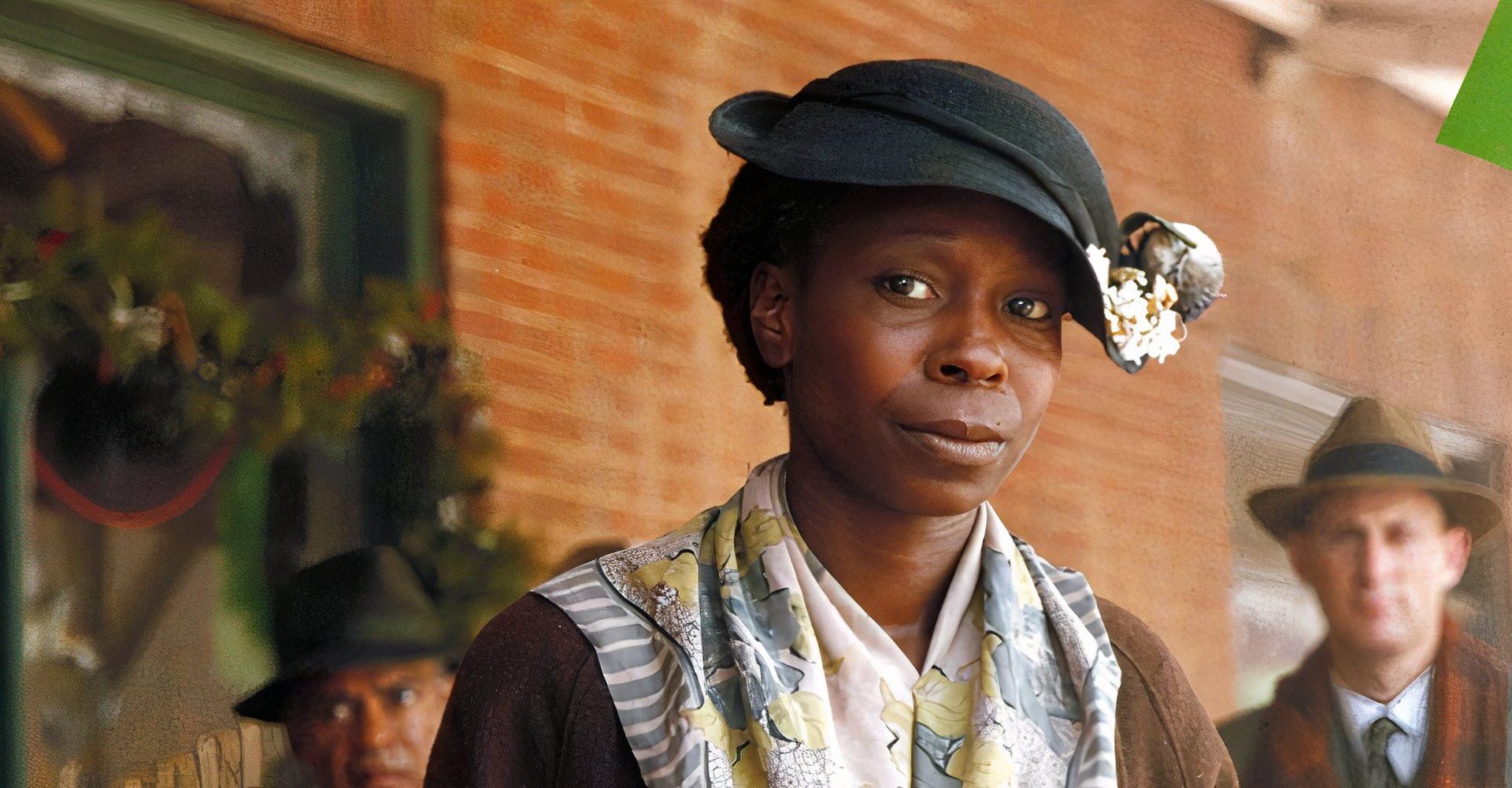In 1985, the box office was a very different beast. It was the golden age of analog adventure, Cold War swagger, and heartfelt sincerity unburdened by irony. CGI was in its infancy, franchises hadn’t yet become factory-made machines (though that was very much starting), and original stories, whether whimsical, bruising, or utterly bizarre, could still dominate theaters.
Watching these movies today is like stepping into a time capsule filled with mullets, synth scores, and practical effects, but also with storytelling risks modern studios rarely take. The year’s biggest hits reveal a world where sci-fi comedies could rule the summer, where earnest dramas could become prestige juggernauts, and where Sylvester Stallone could headline two of the top three highest-grossing films. As the song says, those really were the days.
10
‘Spies Like Us’
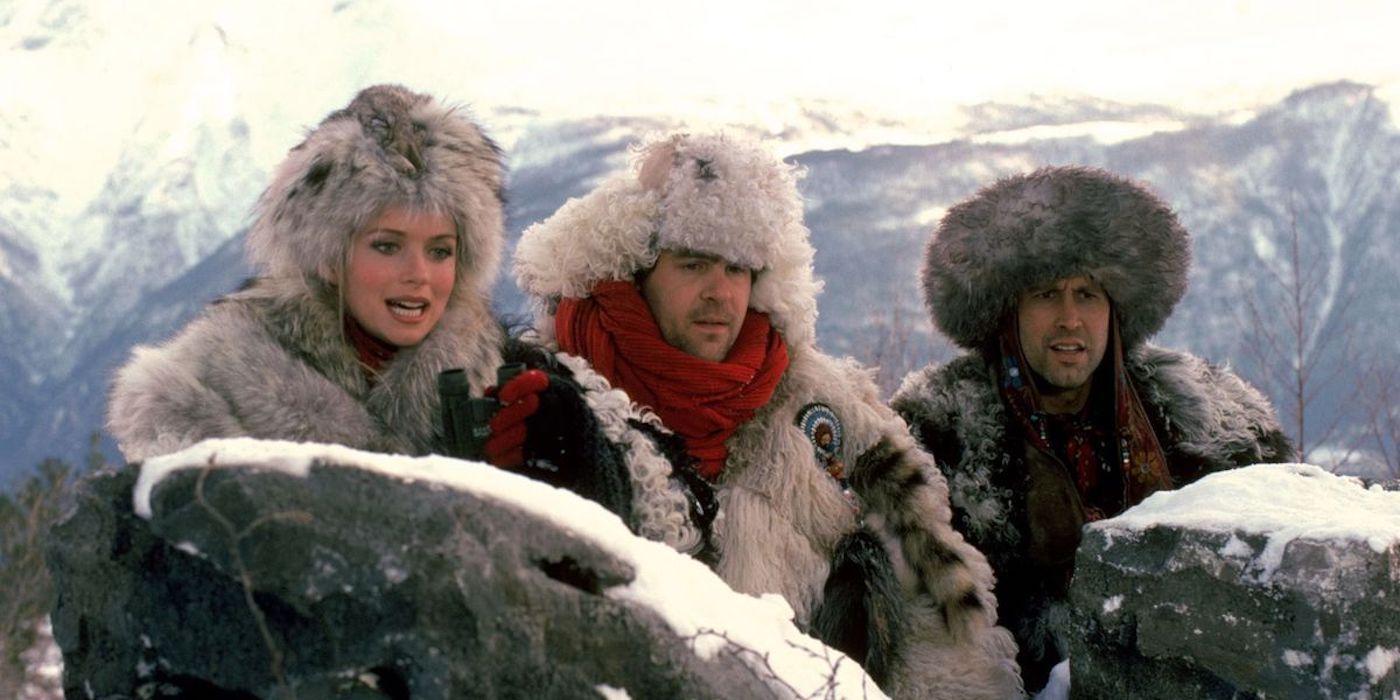
Image Via Warner Bros.
Spies Like Us is the kind of mid-budget studio vehicle that rarely gets made today. This Cold War espionage comedy revolves around two bumbling government employees (Chevy Chase and Dan Aykroyd) who are accidentally promoted to the role of decoy spies, blundering their way through a series of increasingly absurd espionage mishaps. While it wasn’t a critical darling, the flick raked in $60 million at the box office, proof that the star power of Chase and Aykroyd was still a major draw in 1985.
Today, the film serves as a time capsule of Reagan-era paranoia filtered through screwball comedy. Its offbeat tone, political satire, and commitment to goofiness might feel dated to modern audiences, but therein lies the charm. Spies Like Us is also a reminder of an era when studios took bigger comedic swings, and when major box office success didn’t require global franchises or CGI explosions. Indeed, it’s unlikely to be any politically-edged mid-tier comedies cracking the box office top ten this year.
9
‘The Goonies’
A touchstone for a generation, The Goonies earned $63 million in 1985 by capturing the thrill of youthful discovery and the spirit of an old boys’ adventure story. It follows a ragtag group of kids who stumble upon a pirate treasure map and set out to save their neighborhood from foreclosure. The Goonies represented a formidable creative trio behind the camera: directed by Richard Donner and written by Chris Columbus from a story by Steven Spielberg.
The film’s blend of coming-of-age emotion, slapstick comedy, and genuine suspense made it an immediate hit, and it remains a classic. Watching it today, The Goonies weirdly feels both dated and timeless. Its analog warmth, practical effects, and kid-first storytelling contrast sharply with the highly polished, algorithm-driven kids’ fare of today. It’s messy, over-the-top, and full of heart, exactly the kind of movie that can shape childhoods. Fewer market-tasted story beats, more scrappy sincerity. This formula can still work, though studios are increasingly hesitant to take the gamble.
8
‘Witness’
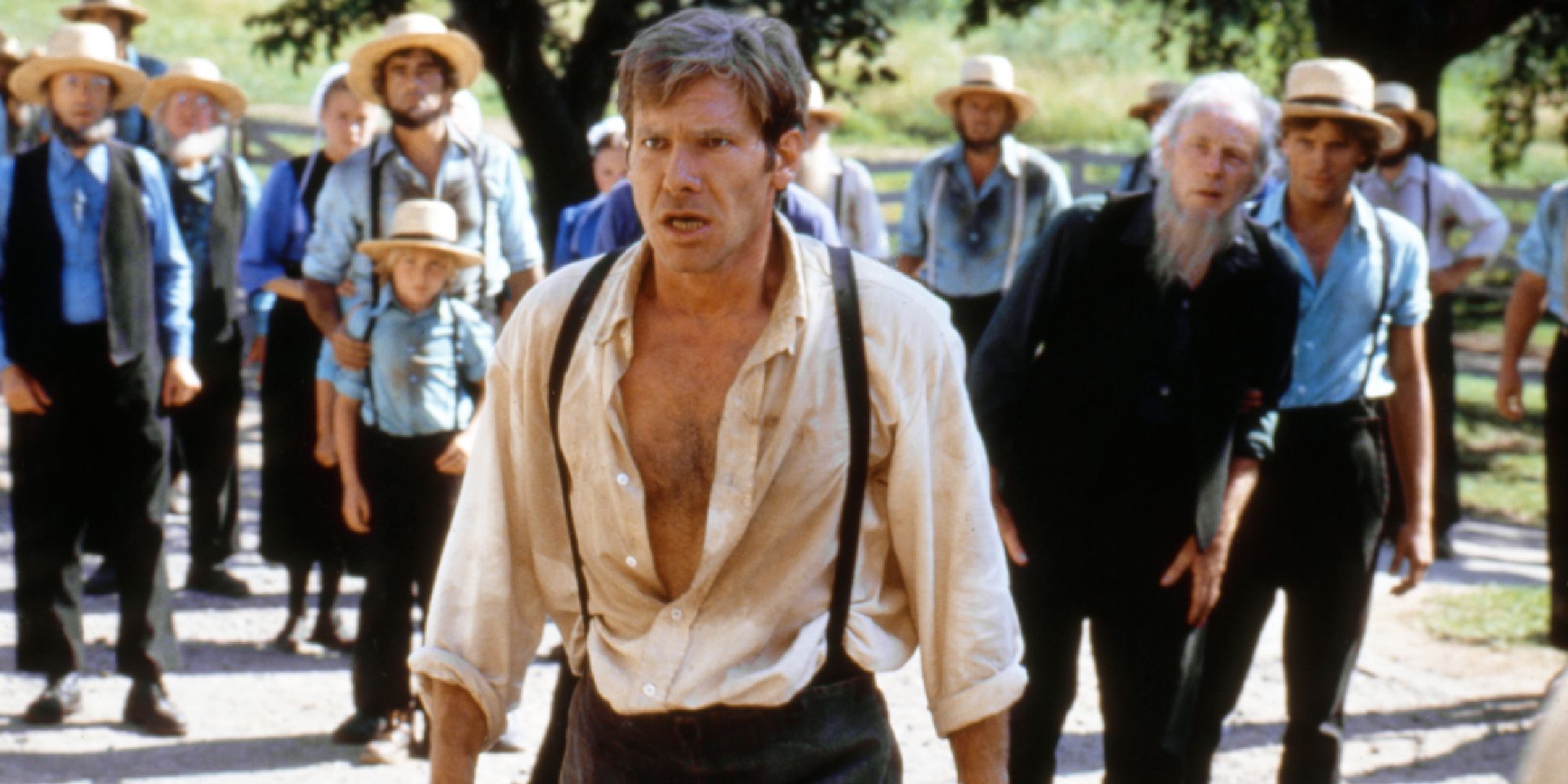
Image via Paramount Pictures
Directed by Peter Weir (Dead Poets Society, The Truman Show), Witness is a moody, adult thriller that showcases just how far mainstream cinema has drifted from slow-burning, character-driven stories. It stars Harrison Ford as a hardened detective protecting a young Amish boy who’s witnessed a murder. What begins as a crime thriller becomes a quietly moving cultural collision, as Ford’s character hides in an Amish community and slowly sheds his cynicism.
It’s one of Ford’s finest performances, far removed from his blockbuster roles, which earned him his only Oscar nomination. Witness is a window into a more contemplative, human form of Hollywood storytelling; its pace is patient, its tone understated, and it leans into silence and nuance. Nowadays, that sounds more like the stuff of a niche arthouse film than a commercial hit. Despite its seriousness (or perhaps because of it), Witness earned a solid $68 million. Adjusted for inflation, that would be $203m in today’s dollars.
7
‘Jewel of the Nile’
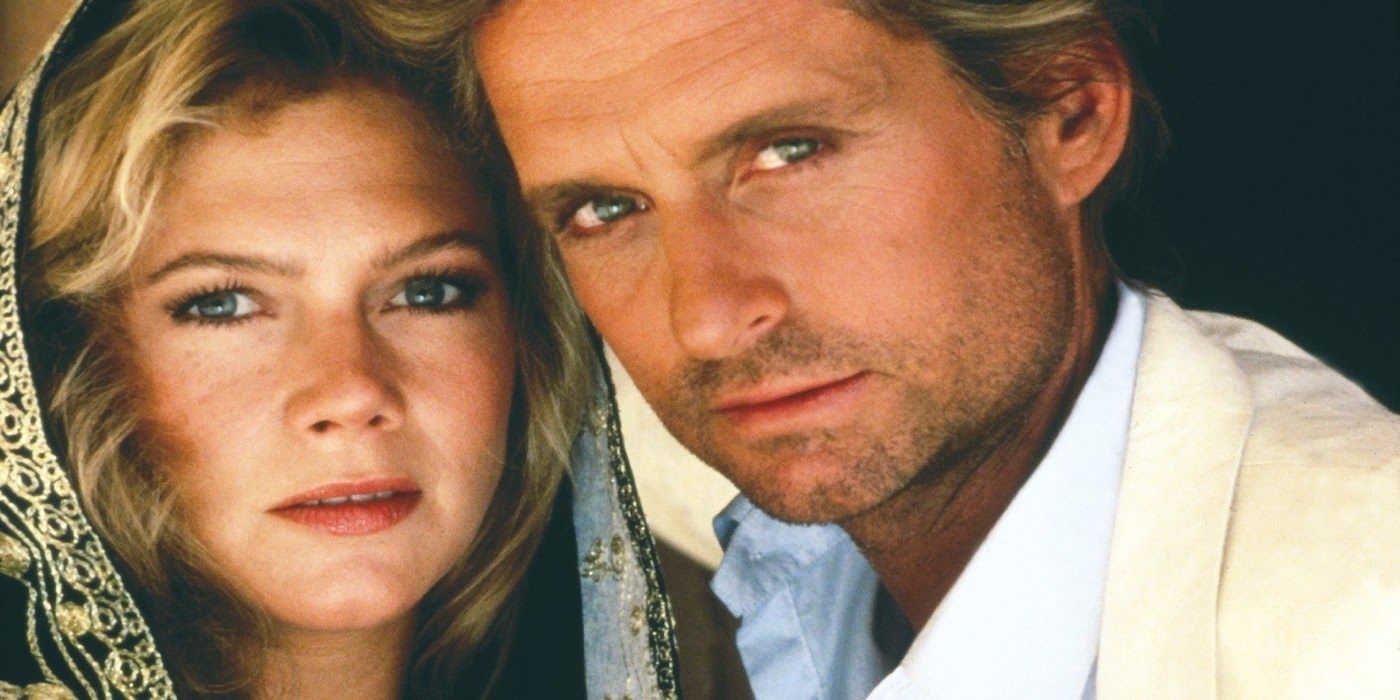
Image via 20th Century Studios
1984’s Romancing the Stone was a sleeper hit that significantly boosted Robert Zemeckis‘s career. The studio quickly followed it up with Jewel of the Nile, which swapped Zemeckis out for Lewis Teague but reunited Michael Douglas, Kathleen Turner, and Danny DeVito. They team up for another romantic adventure romp, this time in North Africa. While not as critically acclaimed as its predecessor, Jewel of the Nile delivers a blend of action, comedy, and chemistry that still holds up for fans of ’80s cinema.
It’s a film powered by star charisma and exotic spectacle rather than digital effects or shared universe lore. Rewatching it today, one is struck by how tactile everything feels, from the dusty streets to the sweeping desert landscapes. The movie feels rooted in a real world, however heightened, and that gives it a kind of retro glamour and physicality. While not as successful as its predecessor, Jewel of the Nile still brought in a solid $75 million domestically.
6
‘Cocoon’
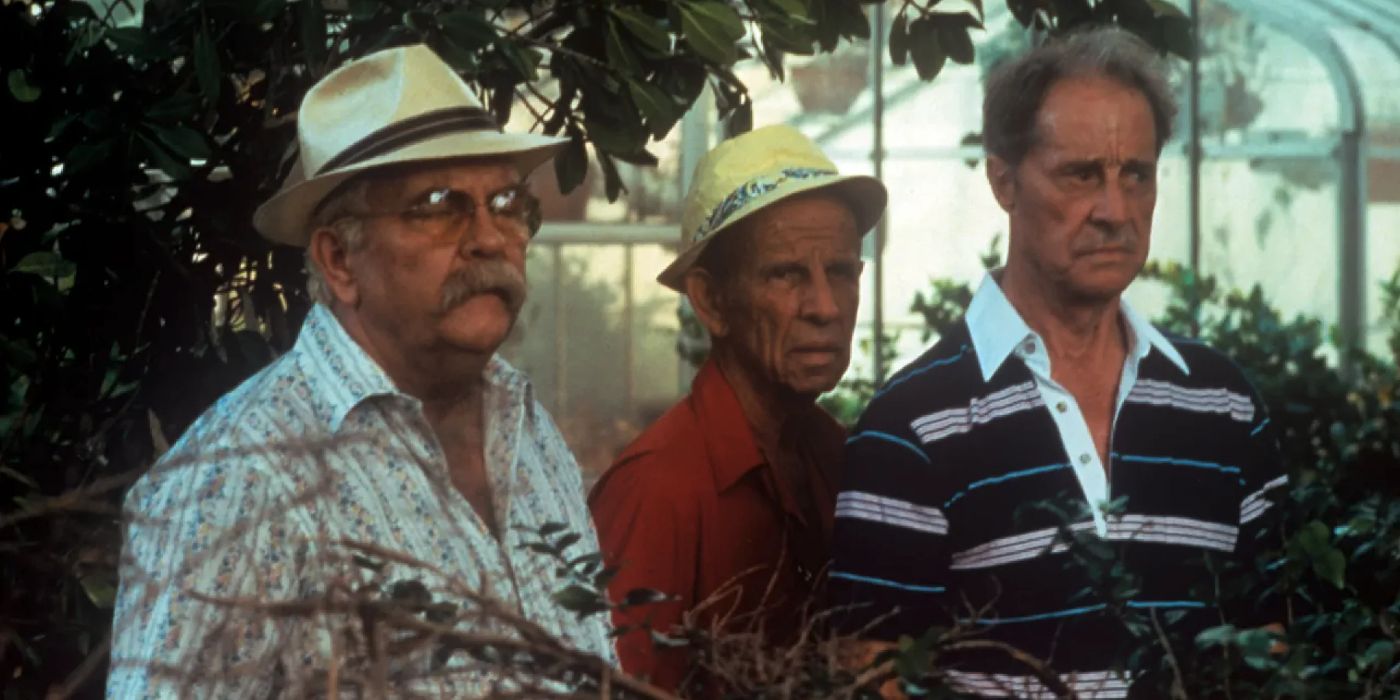
Image via 20th Century Studios
Ron Howard‘s Cocoon was one of 1985’s most unexpected hits, grossing $111 million worldwide with a science fiction premise that somehow fused aliens and the challenges of old age. It could have been a mess, but the result is a surprisingly emotional blockbuster. The story centers on a group of senior citizens (Don Ameche, Wilford Brimley, and Hume Cronyn) who discover that swimming in a mysterious pool rejuvenates their bodies, thanks to the alien cocoons resting at the bottom. Equal parts sci-fi, drama, and gentle comedy, the film tapped into themes of mortality and vitality in ways that still resonate.
It’s not often that we see older characters given this kind of narrative focus, let alone in a major studio release. Today, it feels even more poignant in a world obsessed with youth and spectacle. Its hopeful tone, stellar ensemble cast, and emotional core stand as proof that high-concept doesn’t have to be soulless. On top of its impressive box office haul, Cocoon even took home two Academy Awards.
5
‘Out of Africa’

Image via Universal Pictures
Winning Best Picture and grossing $87 million domestic and $220 million worldwide, Out of Africa is a sweeping romantic epic built on visual grandeur and emotional intimacy. It’s a relic of a very specific era of prestige filmmaking, one which is unlikely ever to return. Meryl Streep leads the cast as Karen Blixen, joined by Robert Redford as Denys Finch Hatton. The film chronicles their doomed romance against the backdrop of colonial Kenya. The sensibilities are decidedly old-school: lush cinematography, a soaring John Barry score, and stately pacing (it’s 161 minutes long).
Admittedly, Out of Africa hasn’t aged all that well (outside of the strong lead performances) and is generally considered one of the more overrated Best Picture Winners. Still, it’s fascinating that this kind of period drama, one low on flashiness or a high-concept hook, performed so well commercially in 1985. Could a slow-paced, adult-targeted drama focusing on mood and scenery do so well today? Doubtful.
4
‘The Color Purple’
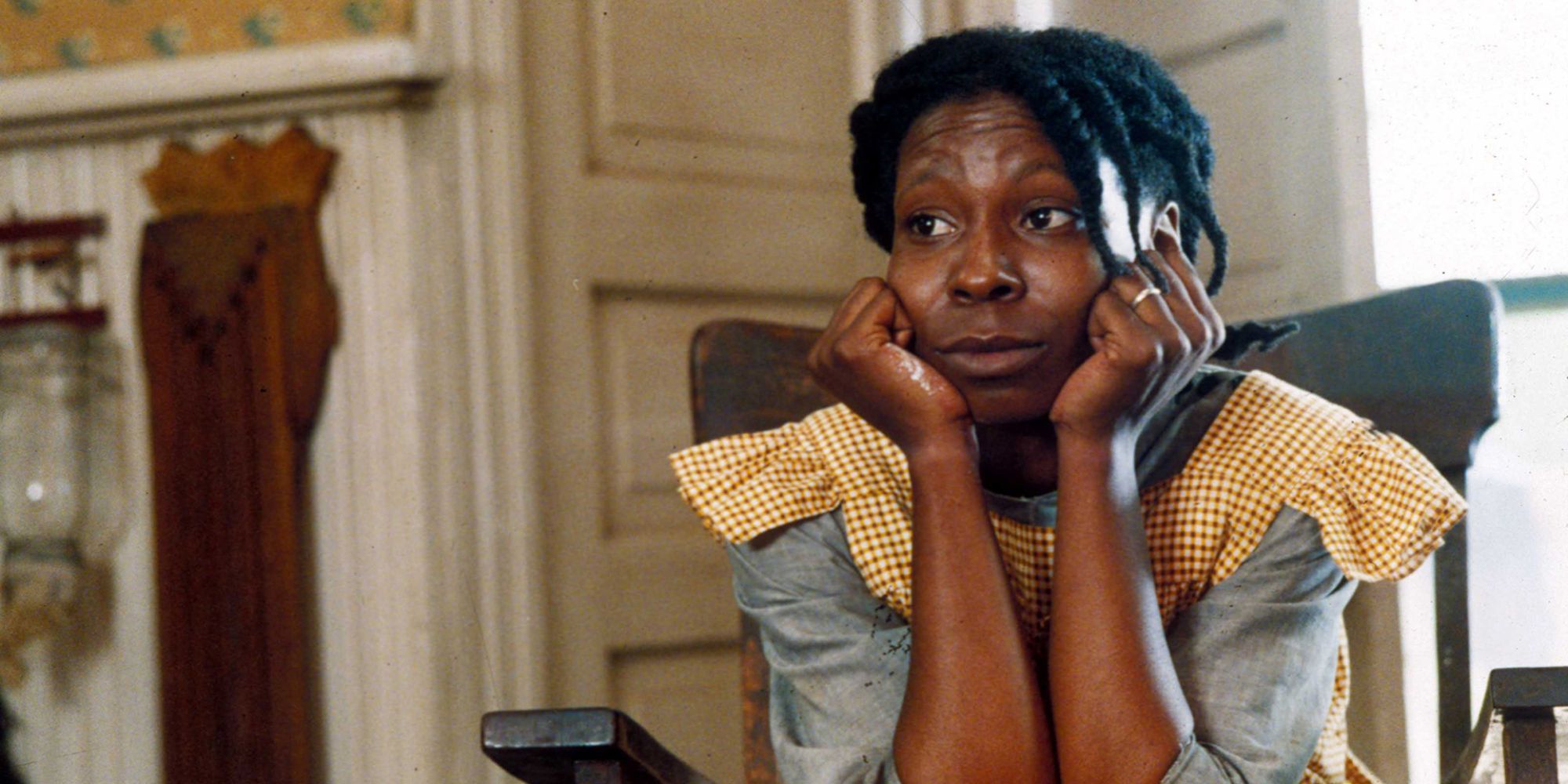
Image via Warner Bros.
The Color Purple, Steven Spielberg‘s first real foray into pure drama, grossed over $90 million domestic and marked a major shift in both the director’s career and mainstream American cinema. Adapted from Alice Walker‘s Pulitzer Prize-winning novel, the film tells the harrowing and redemptive story of Celie (Whoopi Goldberg), a Black woman in the early 20th-century American South. It was one of the first big studio films to focus on a Black female protagonist with emotional seriousness and moral gravity.
Nominated for 11 Oscars, The Color Purple was a cultural milestone, even as it faced criticism and debate for its portrayal of trauma. Nearly 40 years later, its raw emotional power and humanistic spirit remain undeniable. It also heralded a broader awareness in Hollywood of stories that had long been marginalized. In hindsight, The Color Purple feels ahead of its time, a quietly radical film wrapped in a traditional form. Flawed but important.
3
‘Rocky IV’
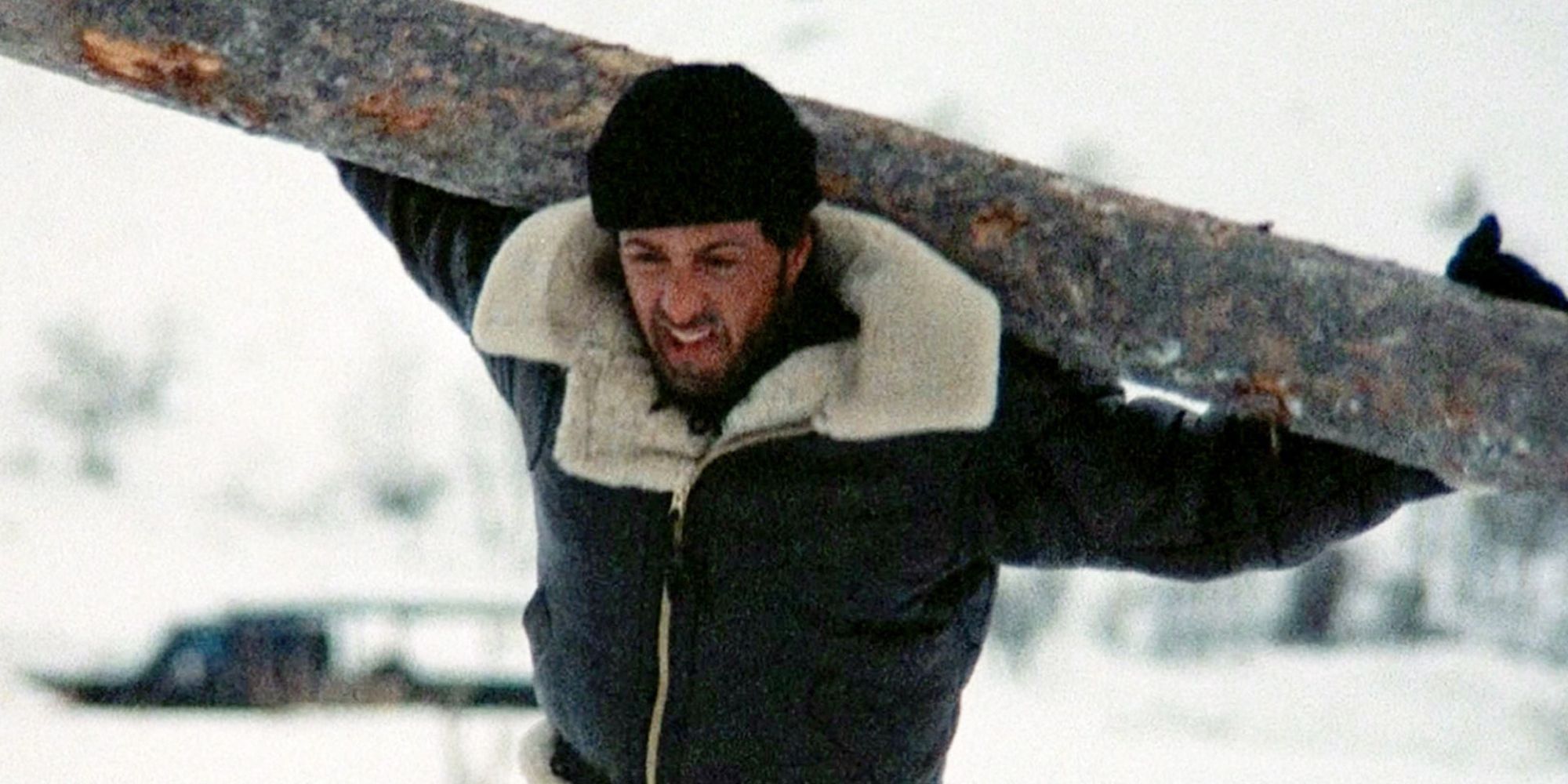
Image via MGM
Rocky IV went beyond being a boxing movie, becoming a straight-up Cold War event. Earning an astonishing $300 million worldwide, it saw Rocky Balboa (Sylvester Stallone) facing off against the towering Soviet super-athlete Ivan Drago (Dolph Lundgren). It’s one of the most unabashedly patriotic and over-the-top entries in the franchise, complete with montages, synth-rock anthems, and slow-mo punches that practically shake the screen. At the time, Rocky IV tapped directly into the cultural zeitgeist, offering a cathartic fantasy of American triumph over Soviet menace.
Although the collapse of the Soviet Union was just years away, victory in the Cold War very much did not guaranteed at the time. While modern audiences might chuckle at its jingoism and cartoonish intensity, the flick’s pop-art earnestness has aged into a kind of camp brilliance. This is a movie that believes in every punch, every speech, every training montage, and that sincerity makes it strangely moving. In a cynical age, Rocky IV is almost refreshing in its muscular, unironic appeal.
2
‘Rambo: First Blood Part II’
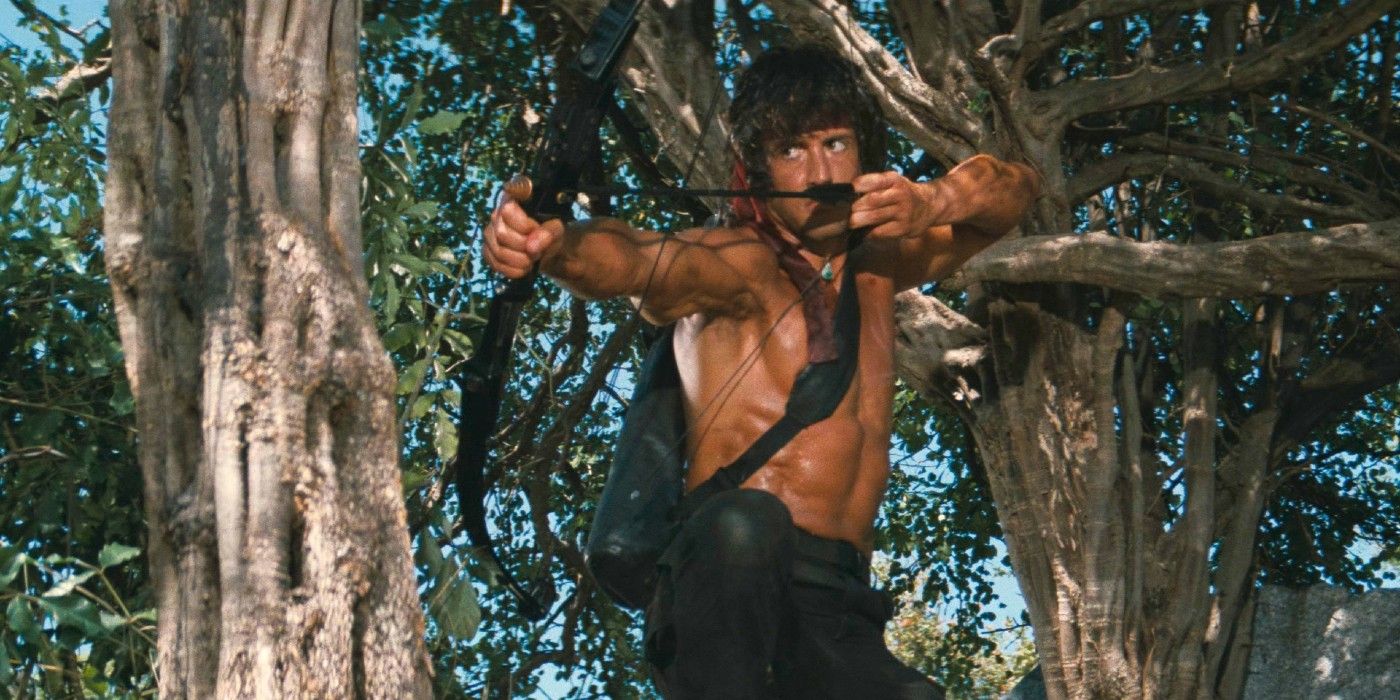
Image via TriStar Pictures
Stallone was on fire in 1985. Another Reagan-era juggernaut, Rambo: First Blood Part II raked in $300 million; that would be about $896 million today. If the original First Blood was a veiled critique of postwar trauma, the sequel is pure power fantasy, as John Rambo is sent back to Vietnam to rescue POWs and unleash righteous destruction. The plot has all the subtlety of a sledgehammer. This combustible admixture of violence, spectacle, and revenge fantasy struck a deep chord with ’80s audiences and cemented Rambo as an American icon.
Watching it today, the movie’s politics and tone are undeniably jarring, but they also offer insight into the cultural psyche of the time. It represents a moment when America sought reassurance through cinematic dominance. Despite its flaws, Rambo II remains a touchstone in the history of action cinema, and its influence, both stylistically and ideologically, can still be felt today. It has spawned countless imitators but few equals.
1
‘Back to the Future’
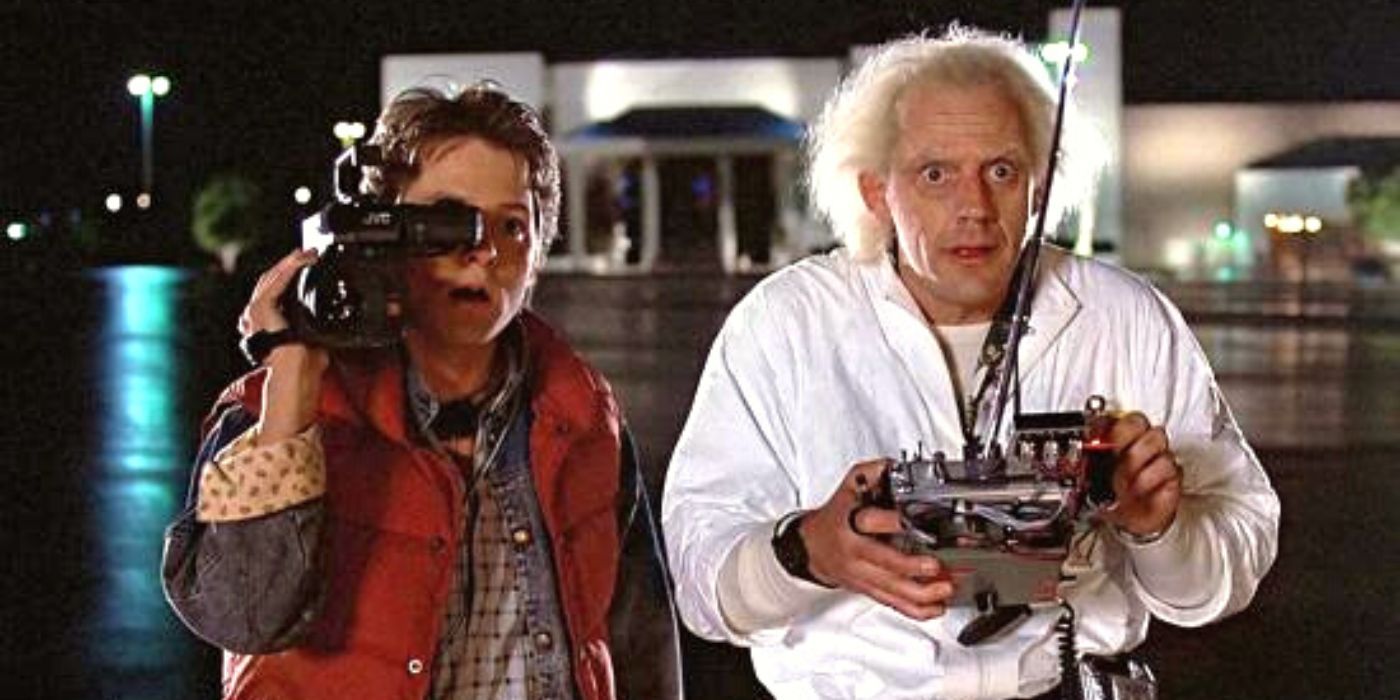
Image via Universal Pictures
The top-grossing movie of 1985 was Back to the Future. It pulled in $381 million and helped redefine blockbuster storytelling, quickly becoming one of the decade’s most emblematic films. Michael J. Fox turns in a legendary lead performance as Marty McFly, who’s accidentally sent back to 1955 and must ensure his parents fall in love to save his family’s existence. It’s a perfect combo of sci-fi invention, coming-of-age drama, and sharp comedy. No wonder it became a pop culture phenomenon.
What’s most striking now is how lean and inventive it is, packed with charm, irony, and heart. In an era when most blockbusters stretch past two hours and tend to rely on sound and fury rather than likable characters, Back to the Future feels breezy and precise. Its influence is everywhere, but few films have matched its emotional clarity, narrative precision, and sheer fun. Forty years later, it’s still one of the most rewatchable films ever, one that transcends 1985.
NEXT: A Century of Words — The 10 Greatest Screenplays of the Last 100 Years, Ranked
